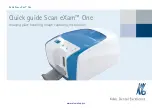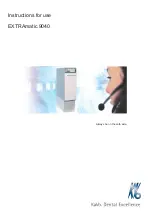
KTR-STOP
®
S-A-F B-xx
Operating/Assembly instructions
KTR-N
Sheet:
Edition:
44591 EN
18 of 24
5
Please observe protection
note ISO 16016.
Drawn:
2019-08-13 Pz/Mro
Replacing:
KTR-N dated 2018-12-04
Verified:
2019-08-13 Pz
Replaced by:
In respect of environmental protection we would ask you to dispose of the products on termination of their service
life in accordance with the legal regulations and standards that apply, respectively.
•
Metal or brake pads, respectively
Brake pads and any other metal parts have to be cleaned and disposed of by scrap metal.
•
Gaskets
Gaskets can be disposed of by residual waste.
•
Sensors
Electrical components have to be treated as electrical waste.
•
Hydraulic oil
Hydraulic oils have to be collected in suitable tanks and disposed of by a waste disposal company.
Brake pads having a balance of pad height of less than 2 mm have to be replaced by return.
STOP
Parts released or falling down may cause injury to persons or damage on the machine.
Secure the components before disassembly.
!
Never keep your fingers between brake disk and brake when locking the brake in order to
prevent serious injuries of your hands. Before every maintenance operation please make
sure that the brake is fully secured against activating.
•
Disassemble the pad holders on one side (component 1.14 and 1.15).
•
Remove the pad retracting sets (component 6 and 8).
•
Replace the brake pads that have worn off. Insert the brake pads (component 7) fully into the brake caliper or
the distance plate, respectively.
•
Applying for the movable side only:
Push back the brake pad and brake piston manually.
!
Please make sure that at least one screw plug (component 1.6) is removed when moving
back the brake piston. Afterwards re-assemble the screw plug.
•
Hand-tighten the pad holders (component 1.14 and 1.15) by each 2-off cap screws (component 1.11) for the
time being. Tighten the screws at the tightening torque T
A
= 302 Nm.
Please make sure that the pad holders of the housing have various heights.
•
Mount the pad retraction set on the movable side (component 8) by shifting the pressure spring (component
8.2) onto the pin (component 8.1). Screw the pin with the pressure spring into the brake pad against a stop.
•
Repeat this process with the pad retraction set on the fixed side of caliper (component 6).
4
Assembly
4.12 Disposal
5
Maintenance
5.1 Replacement of brake pads







































